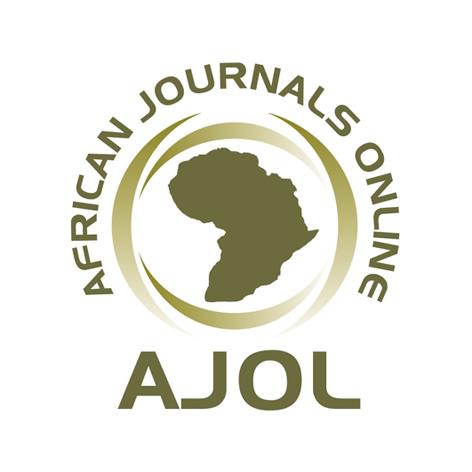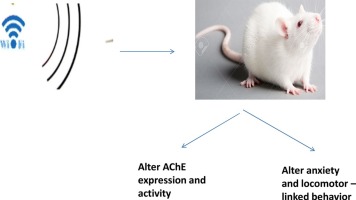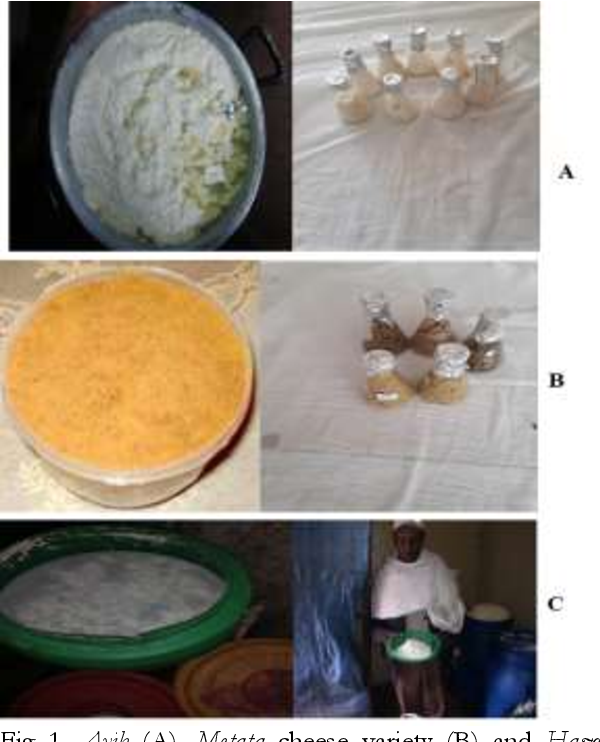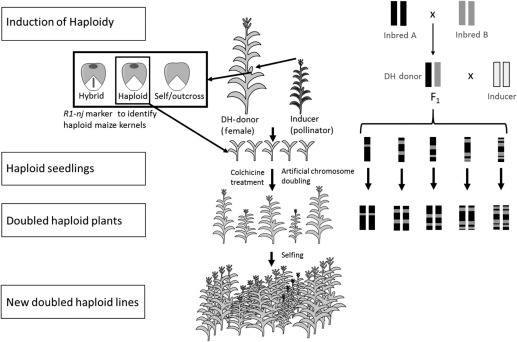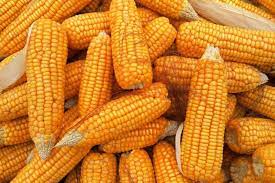Characterizing and Classifying Soils of Sentele Watershed, Hadiya Zone, Southern Ethiopia
Downloads
Background: Soil morphological, physical, and chemical characteristics are vital for determining suitable land use and increasing crop productivity under certain environmental conditions. Thus, this study was carried out to characterize and classify the soils of the Sentele Watershed in southern Ethiopia.
Materials and Methods: The preliminary boundary of the Watershed and soil mapping units (SMU) was defined using a topographic map (1:50,000). Four soil pedons were dug, and soil samples were collected from the pedons and taken to the laboratory for testing soil physical and chemical parameters. The soil pedons were described using FAO soil description guideline.
Results: The soils in the Watershed range from intermediately deep to deep (70 to >200 cm), with varying colors (dark brown to reddish-brown); varying structures (sub-angular to blocky); moderate to well-drained; and the texture varying from loam, clay loam, and clay. The pH of the soil ranges from 5.6 to 6.4, from moderately acidic to slightly acidic. The soil OC contents vary from medium to very high (1.12–4.9%), medium to high TN contents (0.135–0.484%), and very low to medium contents of AP (8.9–30.1) mg kg–1 soil. The soils have moderate to high CEC (23.8–34.2 cmol (+) kg soil–1). Ca and Mg are the dominant exchangeable cations, followed by K and Na. The soils belong to Rhodic Luvisols, Silandic Andosols, Rhodic Nitisols, and Vertic Luvisols.
Conclusion: The four pedons of the various land mapping units have varied soil morphological, physical, and chemical characteristics. Crop yield is limited by moderate to slight acidity, available phosphorus, and boron. The soils were categorized into one of four classification groups: Chromic Luvisols, Silandic Andosols, Rhodic Nitisols, and Vertic Luvisols. The results show that soils must be used for sustainable agricultural production based on their classification and the potential and limitations they have.
Alemayehu Kiflu. 2015. Characterization of Agricultural Soils in CASCAPE Intervention Woredas in Southern Nations Nationalities and People Region (SNNPR).
Alemayehu Kiflu, Sheleme Beyene and Schoenau, J. 2016. Characterization of problem soils in and around the south-central Ethiopian Rift Valley. Journal of Soil Science and Environmental Management, 7(11): 191–203.
Alemu Lelago and Tadele Buraka. 2018. Soil classification and agricultural potentials of soils of Tembaro. Journal of Environmental Science, 10(6): 75–91.
Allotey, D.F.K., Asiamah, R.D., Dedzoe, C.D. and Nyamekye, A.L. 2008. Physico-chemical properties of three salt-affected soils in the lower Volta Basin and management strategies for their sustainable utilization. West African Journal of Applied Ecology, 12(1). DOI: 10.4314/wajae.v12i1.45776.
Aruleba, J.O. and Ajayi, A.S. 2013. Classification, characterization, and suitability evaluation of the savanna soils of Oyo North of Nigeria. Developments in soil classification, land use planning and policy implications: Innovative thinking of soil inventory for land use planning and management of land resources. Pp.285–303.
Barthès, B. and Roose, E. 2002. Aggregate stability as an indicator of soil susceptibility to runoff and erosion; validation at several levels. Catena, 47(2): 133–149.
Berhanu Debele. 1980. The physical criteria and their rating proposed for land evaluation in the highland region of Ethiopia. Land Use Planning and Regulatory Department, Ministry of Agriculture, Addis Ababa, Ethiopia.
Blake, G.R. and Hartge, K.H. 1986. Bulk density. Pp. 363–575. In: Klute, A. (ed.). Methods of soil analysis: Part 1 Physical and Mineralogical Methods. The American Society of Agronomy, USA.
Bouyoucos, G.J. 1962. Hydrometer method improved for making particle size analyses of soils 1. Agronomy journal, 54(5): 464–465.
Bray, R.H. and Kuntz, L.T. 1945. Determination of Total Organic and Available Forms of Phosphorus in Soils. Soil Science, (59): 39–45.
Buol, S.W., Southard, R.J., Graham, R.C. and McDaniel, P.A. 2011. Soil genesis and classification. John Wiley and Sons, New Jersey. Pp. 544.
Carter, M.R. and Gregorich, E.G. 2003. Soil sampling and methods of analysis. 2nd edition. Canadian Society of Soil Science, Canada. Pp. 1262.
Celik, I. 2005. Land-use effects on organic matter and physical properties of soil in a southern Mediterranean highland of Turkey. Soil and Tillage research, 83(2): 270–277.
Chapman, H.D., editor. 1965. Cation‐exchange capacity. Methods of soil analysis: Part 2 Chemical and Microbiological Properties. The American Society of Agronomy, USA. Pp. 891–901.
De Geus, J.G. 1973. Fertilizer Guide for the Tropics and Subtropics. 2nd edition. Centre d'Etude de l'Azote, Switzerland. Pp. 774.
de la Paz Jimenez, M., de la Horra, A., Pruzzo, L. and Palma, M.R. 2002. Soil quality: a new index based on microbiological and biochemical parameters. Biology and Fertility of Soils, 35: 302–306.
Delgado, A. and Gómez, J.A. 2016. The soil. Physical, Chemical and Biological Properties. Pp. 15–26. In: Villalobos, F.J. and Fereres, E. (eds.). Principles of Agronomy for Sustainable Agriculture. Springer, Berlin.
Endalkachew Fekadu, Kibebew Kibret, Bobe Bedadi and Asmare Melese. 2018. Characterization and classification of soils of yikalo subwatershed in lay gayint district, northwestern highlands of Ethiopia. Eurasian Journal of Soil Science, 7(2): 151–166.
FAO (Food and Agricultural Organization).1999. World Reference Base for Soil Resource. World Soil Resources Report, 84. Rome, Italy
FAO (Food and Agricultural Organization). 2006. Guidelines for Soil Description. 4th edition. Rome, Italy. Pp. 109.
FAO (Food and Agricultural Organization). 2006. Plant nutrition for food security: A guide for integrated nutrient management. FAO Fertilizer and Plant Nutrition Bulletin 16, Rome, Italy.
FAO (Food and Agricultural Organization). 2008. Guide to laboratory establishment for plant nutrient analysis. FAO Fertilizer and Plant Nutrition Bulletin 19, Rome, Italy.
Getachew Beyene, Nigussie Dechassa, Alemayehu Regassa, Lemma Wogi. 2022. Land suitability assessment for apple (Malus domestica) production in Sentele watershed in Hadiya zone, southern Ethiopia. Applied and Environmental Soil Science, https://doi.org/10.1155/2022/4436417.
Harrod, M.F. 1975. Field Experience on Light Soils. In: Proceedings of a Conference on Soil physical conditions and crop production. Agricultural Development and Advisory Service, UK. Pp. 505.
Hartz, T.K. 2007. Soil testing for nutrient availability: Procedures and interpretation for California vegetable crop production. Department of Plant Sciences, Davis, CA, USA. Pp. 1–7.
Hazelton, P. and Murphy, B. 2016. Interpreting Soil Test Results: What Do All The Numbers Mean?. CSIRO Publishing, Clayton, Australia. Pp. 134.
Houba, V.J.G., Van der Lee, J.J., Novozamsky, I. and Walinga, I. 1989. Soil and Plant Analysis: A Series of Syllabi. Part 5 Soil Analysis Procedures. Department of Soil Science and Plant Nutrition, Wageningen Agricultural University, Netherlands.
Hoyle, F. and Fairbanks, M. 2013. Managing Soil Organic Matter: A Practical Guide. 1st edition. Grains Research and Development Corporation (GRDC), Department of Agriculture and Food Western Australia, Australia. Pp. 111.
IUSS Working Group WRB. 2015. World reference base for soil resources 2014 International soil classification system for naming soils and creating legends for soil maps Update 2015.
John, M.K., Chuah, H.H. and Neufeld, J.H. 1975. Application of improved azomethine-H method to the determination of boron in soils and plants. Analytical Letters, 8(8): 559–568.
Jones, J.B. 2001. Laboratory Guide for Conducting Soil Tests and Plant Analysis. Rutledge, Oxfordshire, UK.
Jones, J.B. 2003. Agronomic Handbook: Management of Crops, Soils, and Their Fertility. CRC Press, Boca Raton, FL, USA. Pp. 450.
Karuma, A.N., Gachene, C.K., Msanya, B.M., Mtakwa, P.W., Amuri, N. and Gicheru, P.T. 2015. Soil morphology, physico-chemical properties and classification of typical soils of Mwala District, Kenya. International Journal of Plant & Soil Science, 4(2): 156–170.
Kazmin, V. 1973. Geological map of Ethiopia (scale 1: 2,000,000). Geological Survey of Ethiopia, Addis Ababa, Ethiopia.
Kumar, A., Choudhary, A.K., Pooniya, V., Suri, V.K. and Singh, U. 2016. Soil factors associated with micronutrient acquisition in crops – Biofortification perspective. Biofortification of Food Crops, 159–176.
Landon J.R. 1991. Booker tropical soil manual: A handbook for soil survey and agricultural land evaluation in the Tropics and Subtropics. Longman UK Limited, Essex, UK. Pp. 474.
Maria, R.M. and Yost, R. 2006. A survey of soil fertility status of four agroecological zones of Mozambique. Soil Sciences, 171(11): 902–914.
McCauley, A., Jones, C. and Jacobsen, J. 2009. Soil pH and organic matter. Nutrient Management Module, 8(2): 1–12.
McKenzie, N., Jacquier, D., Isbell, R. and Brown, K. 2004. Australian Soils and Landscapes: An illustrated Compendium. CSIRO Publishing, Clayton, Australia.
Moss, P. 1961. Limits of interference by iron, manganese, aluminum and phosphate in the EDTA determination of calcium in the presence of magnesium using Cal‐red as indicator. Journal of the Science of Food and Agriculture, 12(1): 30–34.
Mulugeta Debele, Bobe Bedadi, Sheleme Beyene and Muktar Mohammed. 2018. Characterization and Classification of Soils of Muger Sub-Watershed, Northern Oromia, Ethiopia. East African Journal of Sciences, 12(1): 11–28.
Munsell, S.C.C. 1994. Macbeth Division of Kollmorgen Instruments. New Windsor, New York, USA.
Murage, E.W., Karanja, N.K., Smithson, P.C. and Woomer, P.L. 2000. Diagnostic indicators of soil quality in productive and non-productive smallholders’ fields of Kenya’s Central Highlands. Agriculture, Ecosystems and Environment, 79(1): 1–8.
Murphy, H.F. 1968. A Report on fertility status and other data on some soils of Ethiopia. Experimental Station Bulletin No. 44. Hailesilassie College of Agriculture, Oklahoma State University, Stillwater. Pp. 551.
Naseem, S., Hamza, S. and Bashir, E. 2012. Assessment of geochemistry of soils for agriculture at Winder, Balochistan, Pakistan. Water quality, soil and managing irrigation of crops, InTech-Open Access Publisher, Croatia. Pp.73–94.
Rech, J.A., Reeves, R.W. and Hendricks, D.M. 2001. The influence of slope aspect on soil weathering processes in the Springerville volcanic field, Arizona. Catena, 43(1): 49–62.
Nortcliff, S. 2006. Classification Need for the System. Pp. 227–229. In: Lal, R. (ed.). Encyclopedia of Soil Science.
Ryan, J., Estefan, G. and Rashid, A. 2001. Soil and Plant Analysis Laboratory Manual. 2nd edition. Internationl Center for Agricultural Research in the Dry Areas (ICARDA). Aleppo, Syria. Pp. 177.
Seid Mohammed, Kibebew Kibret and Muktar Mohammed. 2017. Characterization and Classification of Soils along Toposequence of Gobeya Sub-Watershed, South Wello Zone, Ethiopia. Asian Journal of Soil Science and Plant Nutrition, 2(4): 1–17.
Sheleme Beyene. 2011. Characterization of soils along a toposequence in Gununo area, southern Ethiopia. Journal of Science and Development, 1(1): 31–41.
Shimelis Damene, Mohamed Assen and Abayneh Eyasu. 2007. Characteristics and classification of the soils of Tenocha-Wenchacher micro-catchment, South-west Shewa, Ethiopia. Ethiopian Journal of Natural Resources, 9(1): 37–62.
Soil Survey Laboratory Methods Manual. 1996. Soil survey Investigator Report No. 42 Version 3.0, USDA.
Sparks, D.L., Singh, B. and Siebecker, M.G. 2022. Environmental Soil Chemistry. Elsevier, Amsterdam, Netherlands.
Tekalign Tadesse, Haque, I. and Aduayi, E.A. 1991. Soil, plant, water, fertilizer, animal manure and compost analysis manual. Available at https://hdl.handle.net/10568/4448.
Teshome Yitbarek, Abdeta Jembere and Habtamu Kerebeh. 2018. Characterization and classification of soils of Wolkite University research sites, Eurasian Journal of Soil Science, 7(4): 292–299.
Reeuwijk, L.P., editor. 2002. Procedures for Soil Analysis. International Soil and Reference Information Centre, Wageningen, Netherlands. Pp. 119.
USDA NRCS. 2011. C:N Ratios in Cropping Systems. USDA Natural Resources Conservation Service Soils. Available at https://www.nrcs.usda.gov/Internet/FSE_DOCUMENTS/nrcseprd331820.pdf. Accessed on 4/5/2022.
Vodyanitskii, Yu.N. and Savichev, A.T. 2017. The influence of organic matter on soil color using the regression equations of optical parameters in the system CIE-L*a*b*. Annals of Agrarian Science, 15(3): 380–385.
Walkley, A. and Black, I.A. 1934. An examination of the Degtjareff method for determining soil organic matter and a proposed modification of the chromic acid titration method. Soil Science, 37: 29–38.
Yates, R.A. 1964. Yield depression due to phosphate fertilizer in sugarcane. Australian Journal of Agricultural Research, 15(4): 537–547.
Copyright (c) 2023 Getachew Beyene, Nigussie Dechassa, Lemma Wogi, Alemayehu Regassa

This work is licensed under a Creative Commons Attribution-NoDerivatives 4.0 International License.
- I am authorized by my co-authors to enter into these arrangements.
- I warrant, on behalf of myself and my co-authors, that:
- the article is original, has not been formally published in any other peer-reviewed journal, is not under consideration by any other journal and does not infringe any existing copyright or any other third party rights;
- I am/we are the sole author(s) of the article and have full authority to enter into this agreement and in granting rights to Springer are not in breach of any other obligation;
- the article contains nothing that is unlawful, libellous, or which would, if published, constitute a breach of contract or of confidence or of commitment given to secrecy;
- I/we have taken due care to ensure the integrity of the article. To my/our - and currently accepted scientific - knowledge all statements contained in it purporting to be facts are true and any formula or instruction contained in the article will not, if followed accurately, cause any injury, illness or damage to the user.
- I, and all co-authors, agree that the article, if editorially accepted for publication, shall be licensed under the Creative Commons Attribution License 4.0. If the law requires that the article be published in the public domain, I/we will notify Springer at the time of submission, and in such cases the article shall be released under the Creative Commons 1.0 Public Domain Dedication waiver. For the avoidance of doubt it is stated that sections 1 and 2 of this license agreement shall apply and prevail regardless of whether the article is published under Creative Commons Attribution License 4.0 or the Creative Commons 1.0 Public Domain Dedication waiver.
- I, and all co-authors, agree that, if the article is editorially accepted for publication in Haramaya Journals, data included in the article shall be made available under the Creative Commons 1.0 Public Domain Dedication waiver, unless otherwise stated. For the avoidance of doubt it is stated that sections 1, 2, and 3 of this license agreement shall apply and prevail.





